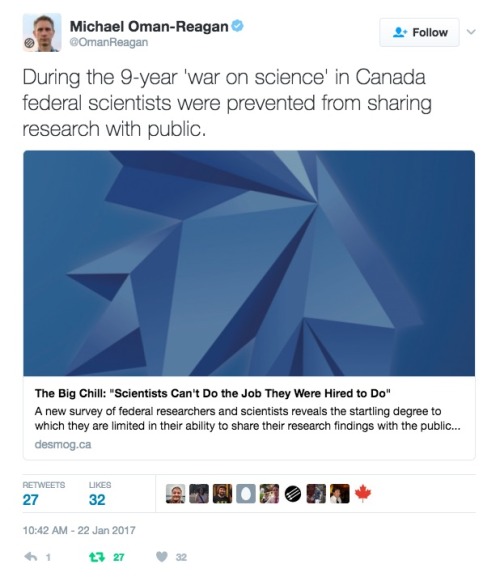The First Of The 2016 Science Nobel Prizes Was Announced Earlier Today. The Prize For Medicine Or Physiology

The first of the 2016 science Nobel Prizes was announced earlier today. The prize for Medicine or Physiology was awarded to Yoshinori Ohsumi for his work on the mechanisms behind autophagy. Find out more about his Nobel-winning work with this graphic! http://bit.ly/NobelSci2016
More Posts from Contradictiontonature and Others


Virus carrying DNA of black widow spider toxin discovered
A tiny virus that may sting like a black widow spider.
That is one of the surprise discoveries made by a pair of Vanderbilt biologists when they sequenced the genome of a virus that attacks Wolbachia, a bacterial parasite that has successfully infected not only black widow spiders but more than half of all arthropod species, which include insects, spiders and crustaceans.
“Discovering DNA related to the black widow spider toxin gene came as a total surprise because it is the first time that a phage – a virus that infects bacteria – has been found carrying animal-like DNA,” said Associate Professor of Biological Sciences Seth Bordenstein. He and Senior Research Specialist Sarah Bordenstein reported the results of their study in a paper titled “Eukaryotic association module in phage WO genomes from Wolbachia” published Oct. 11 in the journal Nature Communications.
Sarah R. Bordenstein, Seth R. Bordenstein. Eukaryotic association module in phage WO genomes from Wolbachia. Nature Communications, 2016; 7: 13155 DOI: 10.1038/ncomms13155
DNA related to black widow spider toxin has been found in a bacterial virus. (iStock)
The oval shape in this electron microphotograph is a Wolbachia bacterium that has infected a Nasonia wasp. The small dots in the bacterium are WO phage particles. The inset shows them at a higher magnification. The white arrows in the inset point to the phage tails. The scale bar in the image is 200 nm and the bar in he inset is 100 nm. (Bordenstein Lab / Vanderbilt)






Dancing Flames - Aluminium’s reactivity
aluminium’s protective oxide layer can make it difficult to see its true reactivity in the context of metals reacting with aqueous solutions. (Do not try to recreate experiment without the presence of a trained professional)
Procedure:
Dissolve copper(II) chloride in the hydrochloric acid and set the solution aside. Take a piece of aluminium foil approximately the width of the base of the conical flask and approximately 20 cm long. Roll it loosely just enough to be able to fit through the neck of the flask – use a splint or spatula to gently push it home so it lies on its side on the base of the flask. Have a source of ignition nearby with some splints. Pour the solution inside the flask and swirl the flask gently to get the reaction going.
After a few seconds, the mixture will begin to react vigorously and produce hydrogen gas. Hold the lit splint by the opening of the flask and the gas will ignite. If you have timed it right, the flame will sink back into the flask and dance inside above the reaction with an eerie green color from the copper.
Reaction:
2Al(s) + 3CuCl2(aq) → 2AlCl3(aq) + 3Cu(s)
2Al(s) + 6HCl(aq) → 2AlCl3(aq) + 3H2(g)
The primary objective here is to show how reactive aluminium is. The aluminium oxide layer protects the metal beneath from further reaction with air, water or acid. But chloride ions can ligate aluminium ions at the metal–oxide interface and break down the protective layer, allowing the reaction to proceed. -rsc
Giffed by: rudescience From: This video









A required read from Michael Oman-Reagan.
This is all true. This all happened in Canada, and its very likely it will happen in the USA under Trump and be worse than Harper’s crackdown on Science ever was.
Links cited in this twitter essay:
The Big Chill: “Scientists Can’t Do the Job They Were Hired to Do”
More than 1000 Jobs Lost, Climate Program Hit Hard in Coming Environment Canada Cuts
Harper Government Trashes Another Federal Science Library
Federal scientists closely monitored during polar conference
Science Silenced: US Scientist Caught in Canadian Muzzle Climate-change scientists feel ‘muzzled’ by Ottawa: Documents
The Canadian War on Science: A long, unexaggerated, devastating chronological indictment
http://ourrighttoknow.ca/
http://write2know.ca/
https://evidencefordemocracy.ca
Are colour-changing octopuses really colourblind?
Cephalopods, including octopuses and squid, have some of the most incredible colour-changing abilities in nature.
They can almost instantly blend in with their surroundings to evade predators or lay in wait, and put on colourful displays to attract mates or dazzle potential prey.
This is impressive enough on its own, but becomes even more amazing when you discover these creatures are in fact colourblind – they only have one type of light receptor in their eyes, meaning they can only see in black and white.
So how do they know what colours to change to at all?
This has puzzled biologists for decades but a father/son team of scientists from the University of California, Berkeley, and Harvard University think the unusual shape of their pupils holds the key, and they can see colour after all.
Cephalopods have wide U-shaped or dumbbell-shaped pupils, which allow light into the lens from many directions.

When light enters the pupils in human eyes it gets focused on one spot, cutting down on blur from the light being split into its constituent colours.
The scientists believe cephalopod eyes work the opposite way – the wide pupils split the light up and then individual colours can be focused on the retina by changing the depth of the eyeball and moving the pupil around.
The price for this is blurry vision, but it does mean they could make out colours in a unique way to any other animals.
Processing colour this way is more computationally intensive than other types of colour vision and likely requires a lot of brainpower, which might explain in part why cephalopods are the most intelligent invertebrates on Earth.

Read the paper
Images: Roy Caldwell, Klaus Stiefel, Alexander Stubbs



This illustrator’s new book is a clever introduction to women scientists through history.
During a dinnertime discussion two years ago, illustrator Rachel Ignotofsky and her friend started chewing on the subject of what’s become a meaty conversation in America: women’s representation in STEM fields.
Ignotofsky, who lives in Kansas City, Missouri, lamented that kids don’t seem to hear much about women scientists. “I just kept saying over and over and over again that we’re not taught the stories of these women when we’re in school,” she recalls. Eventually, it dawned on her: “I was saying it enough that I was like, you know, I’m just talking a lot about this; I should draw some of the women in science that I feel really excited about.”
Learn more here.
[Reprinted with permission from Women in Science Copyright ©2016 by Rachel Ignotofsky. Published by Ten Speed Press, an imprint of Penguin Random House LLC.]








Feeling a little small? Well in the context of the cosmos, we are small. We may just be little guys living on a speck of dust, afloat in a staggering immensity…
…but we dont think small.

It’s a tremendous Trilobite Tuesday!
When most of us think about trilobites, we imagine rather small creatures that inhabited the ancient seas. Indeed, most members of the more than 25,000 scientifically recognized trilobite species were less that three inches in length. Occasionally, however, paleontologists encounter a megafauna where, due to a variety of circumstances, the trilobite species were huge. One of these megafaunas can be found near the small Portuguese town of Arouca where the 450 million year-old Valongo formation produces prodigious numbers of exceptionally large Ordovician-age trilobites, such as this 41 cm Hungioides bohemicus. Other trilobite magafaunas appear sporadically around the globe, including Cambrian locations in Morocco and Devonian outcrops in Nevada.
Meet many more trilobites on the Museum website.
It is imperfection - not perfection - that is the end result of the program written into that formidably complex engine that is the human brain, and of the influences exerted upon us by the environment and whoever takes care of us during the long years of physical, psychological and intellectual development.
Rita Levi-Montalcini

Image Credit: Hammersmith Hospital in London
(via neuromorphogenesis)
The time will come when diligent research over long periods will bring to light things which now lie hidden. A single lifetime, even though entirely devoted to the sky, would not be enough for the investigation of so vast a subject… And so this knowledge will be unfolded through long successive ages. There will come a time when our descendants will be amazed that we did not know things that are so plain to them… Many discoveries are reserved for ages still to come, when memory of us will have been effaced. Our universe is a sorry little affair unless it has something for every age to investigate… Nature does not reveal her mysteries once and for all.
Seneca
(via scienceisbeauty)

Astronomers Discover an Entirely New Kind of Galaxy
Astronomers at the University of Minnesota Duluth and the North Carolina Museum of Natural Sciences have identified a new class of ring galaxy. Named PGC 1000714, it features an elliptical core with not one, but two outer rings. It’s the only known galaxy of its kind in the known universe.
-
 felixdoriga liked this · 5 years ago
felixdoriga liked this · 5 years ago -
 inboundflight liked this · 5 years ago
inboundflight liked this · 5 years ago -
 sunilnanjiani liked this · 6 years ago
sunilnanjiani liked this · 6 years ago -
 fractal-fluctuation liked this · 6 years ago
fractal-fluctuation liked this · 6 years ago -
 nichtsichtbar94 reblogged this · 7 years ago
nichtsichtbar94 reblogged this · 7 years ago -
 dailychristianfellowship liked this · 7 years ago
dailychristianfellowship liked this · 7 years ago -
 att3ntion-d3ficit liked this · 7 years ago
att3ntion-d3ficit liked this · 7 years ago -
 exnihilum liked this · 7 years ago
exnihilum liked this · 7 years ago -
 kimmickey reblogged this · 8 years ago
kimmickey reblogged this · 8 years ago -
 kimmickey liked this · 8 years ago
kimmickey liked this · 8 years ago -
 killingcancer reblogged this · 8 years ago
killingcancer reblogged this · 8 years ago -
 thecutestcactus liked this · 8 years ago
thecutestcactus liked this · 8 years ago -
 fuckyeahprettybooks liked this · 8 years ago
fuckyeahprettybooks liked this · 8 years ago -
 wads-of-gabe liked this · 8 years ago
wads-of-gabe liked this · 8 years ago -
 yamaneal20 liked this · 8 years ago
yamaneal20 liked this · 8 years ago -
 enderbaggins liked this · 8 years ago
enderbaggins liked this · 8 years ago -
 pedoxonna liked this · 8 years ago
pedoxonna liked this · 8 years ago -
 na-l0 liked this · 8 years ago
na-l0 liked this · 8 years ago -
 misoukie-blog reblogged this · 8 years ago
misoukie-blog reblogged this · 8 years ago -
 lessermass reblogged this · 8 years ago
lessermass reblogged this · 8 years ago -
 mercuryfulminate liked this · 8 years ago
mercuryfulminate liked this · 8 years ago -
 pupcake2 liked this · 8 years ago
pupcake2 liked this · 8 years ago -
 ghdfsajhfjkas33 liked this · 8 years ago
ghdfsajhfjkas33 liked this · 8 years ago -
 internetfollower reblogged this · 8 years ago
internetfollower reblogged this · 8 years ago -
 internetfollower liked this · 8 years ago
internetfollower liked this · 8 years ago -
 latent-semantics reblogged this · 8 years ago
latent-semantics reblogged this · 8 years ago -
 existenceguru reblogged this · 8 years ago
existenceguru reblogged this · 8 years ago -
 midgardgurl liked this · 8 years ago
midgardgurl liked this · 8 years ago -
 surgikos liked this · 8 years ago
surgikos liked this · 8 years ago -
 abdelouahab-ait liked this · 8 years ago
abdelouahab-ait liked this · 8 years ago -
 shenesuli-blog liked this · 8 years ago
shenesuli-blog liked this · 8 years ago -
 thefuturebiochemist reblogged this · 8 years ago
thefuturebiochemist reblogged this · 8 years ago -
 yougotmewishingforthestars liked this · 8 years ago
yougotmewishingforthestars liked this · 8 years ago -
 satiricalscientist reblogged this · 8 years ago
satiricalscientist reblogged this · 8 years ago -
 xacex-blog1 liked this · 8 years ago
xacex-blog1 liked this · 8 years ago
A pharmacist and a little science sideblog. "Knowledge belongs to humanity, and is the torch which illuminates the world." - Louis Pasteur
215 posts